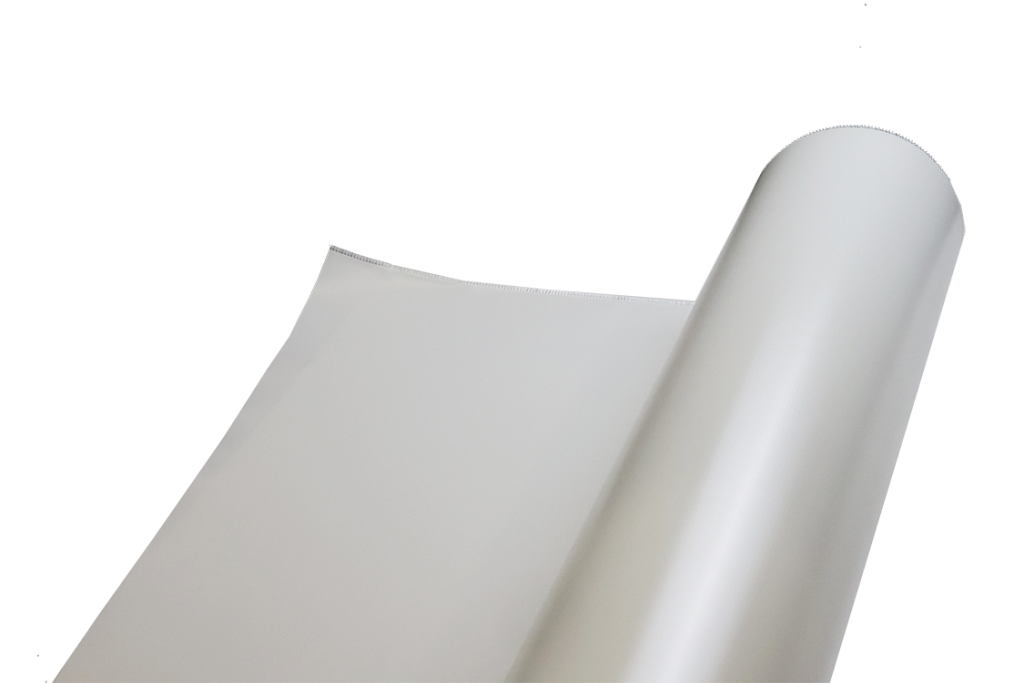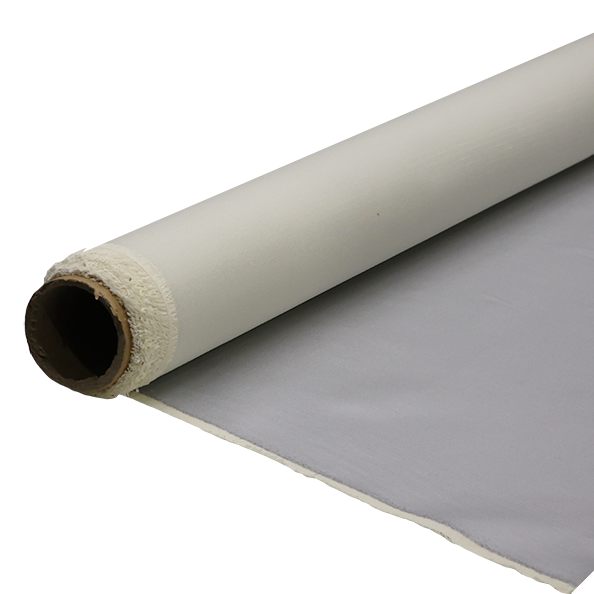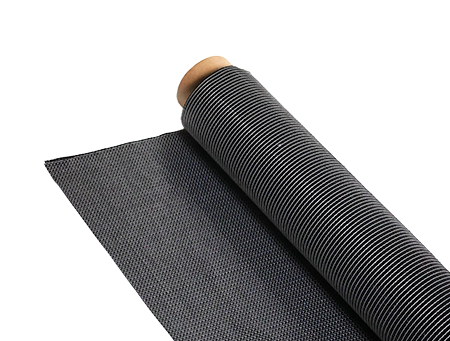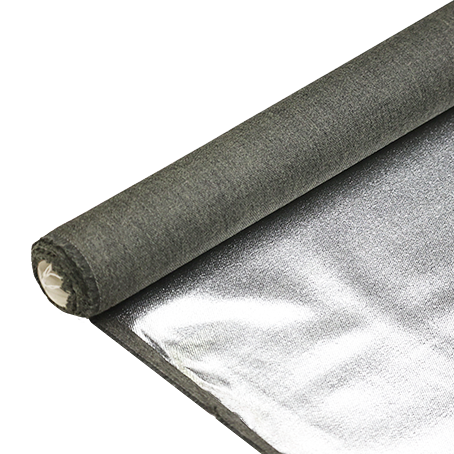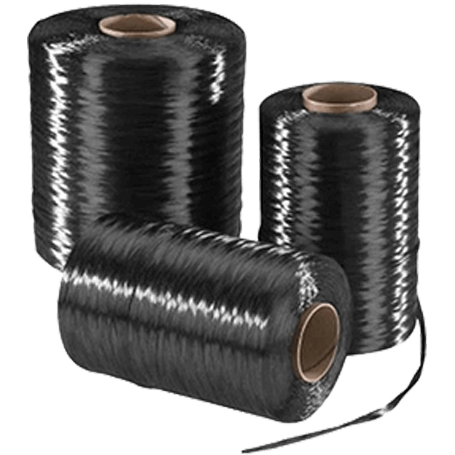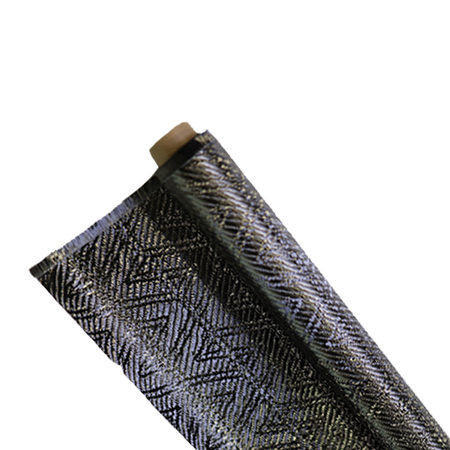10 Things You Don’t Know About Carbon Fiber Cloth
-
 Your Composites Expert Carbon Fiber Materials&Products
Your Composites Expert Carbon Fiber Materials&Products -
-1.png?width=686&height=617) Your Composites Expert Aramid Fiber Materials&Products
Your Composites Expert Aramid Fiber Materials&Products -
 Your Composites Expert UHMWPE Materials&Products
Your Composites Expert UHMWPE Materials&Products -
 Your Composites Expert Fiberglass Materials&Products
Your Composites Expert Fiberglass Materials&Products -
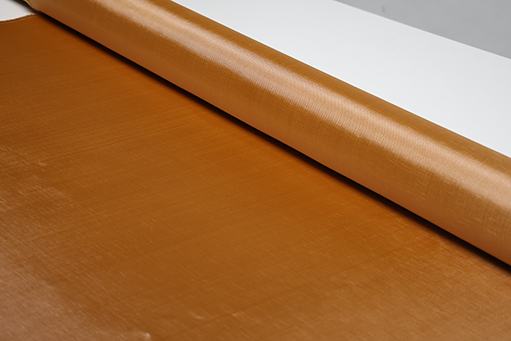 Your Composites ExpertPBO Materials&Products
Your Composites ExpertPBO Materials&Products -
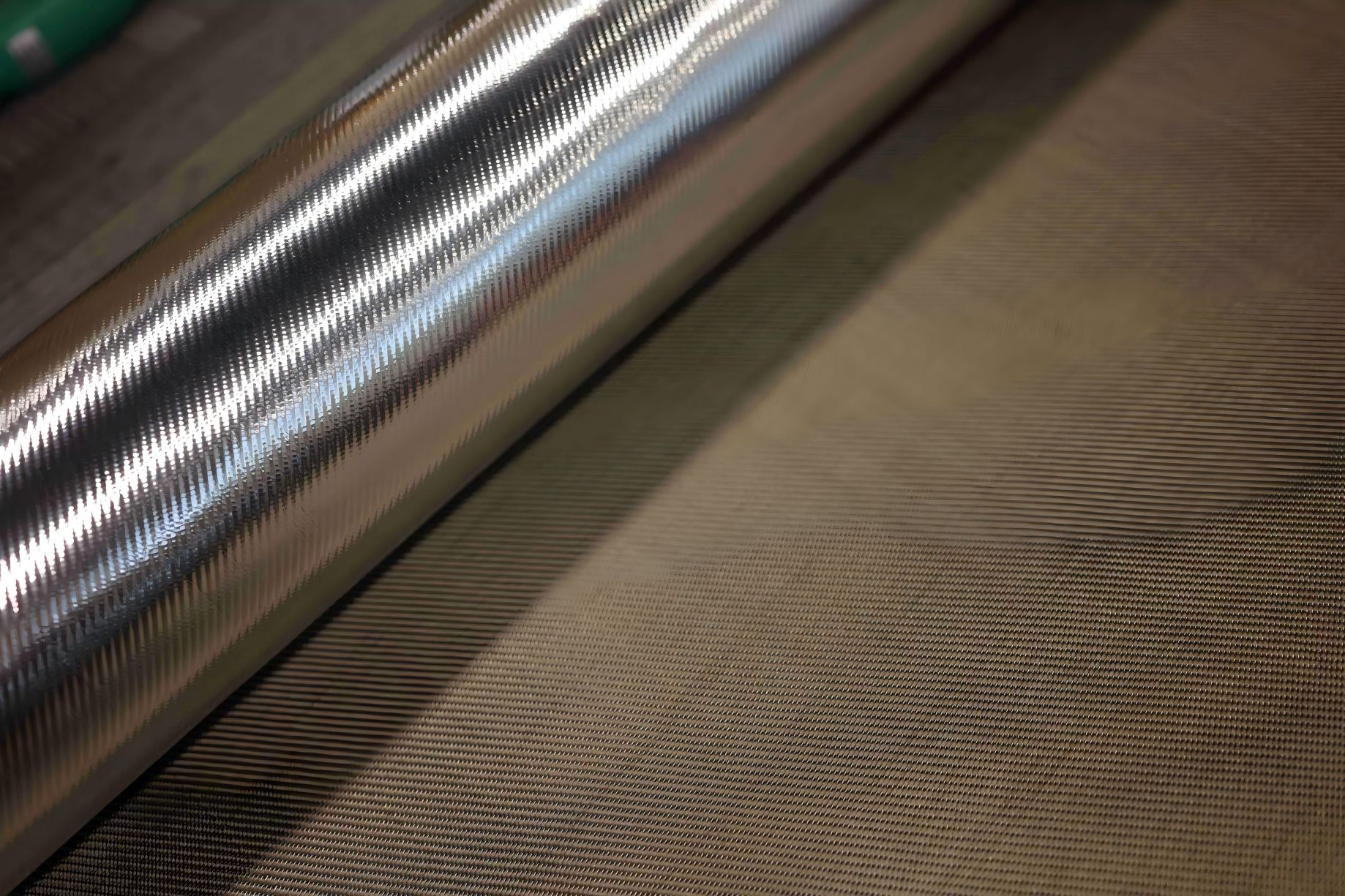 Your Composites Expert Basalt Materials&Products
Your Composites Expert Basalt Materials&Products
Welcome to the fascinating world of carbon fiber cloth! This advanced material boasts incredible strength and versatility, making it a game-changer in various industries. Whether you're an engineer, a sports enthusiast, or simply curious about innovative materials, this article will provide you with surprising facts and insights about carbon fiber cloth that will expand your understanding and appreciation for its uses and properties.

So, let's dive in and discover the untold secrets of carbon fiber cloth!
Key Takeaways:
- Carbon fiber cloth is a high-performance material known for its exceptional strength-to-weight ratio.
- It is composed of tightly woven carbon fibers that are extremely lightweight yet incredibly strong.
- The manufacturing process involves treating carbon fibers with heat and pressure to create a rigid and durable cloth.
- Carbon fiber cloth has revolutionized industries such as aerospace, automotive, and sports by offering superior performance and durability.
- From aircraft components to sporting equipment, carbon fiber cloth finds applications in a wide range of products and structures.
What is Carbon Fiber Cloth?
Before we delve into the details, let's first understand what carbon fiber cloth is. Carbon fiber cloth is a high-performance material composed of thin strands of carbon fibers tightly woven together to form a sheet or fabric. These fibers are incredibly strong and lightweight, making carbon fiber cloth an ideal choice for a wide range of applications.
Carbon fiber cloth is manufactured through a complex process that involves spinning precursor fibers, usually made from polyacrylonitrile (PAN) or pitch, into carbon filament threads. These threads are then treated with various chemicals and heated to extremely high temperatures to eliminate non-carbon elements and increase carbon content.
What sets carbon fiber cloth apart is its unique properties. It has a remarkably high strength-to-weight ratio, surpassing even steel and aluminum. It is also resistant to corrosion and chemicals, making it durable and long-lasting. Additionally, carbon fiber cloth exhibits excellent thermal conductivity and electrical properties.
"Carbon fiber cloth's exceptional strength, light weight, and versatility have propelled it to the forefront of material innovation in industries such as aerospace, automotive, and sporting goods."
Whether it's reinforcing the wings of an aircraft, constructing high-performance sports equipment, or developing cutting-edge automotive parts, carbon fiber cloth has become a sought-after material for its unparalleled performance and reliability.
Take a look at the composition of carbon fiber cloth:
| Components | Description |
|---|---|
| Carbon Fibers | The main structural element, composed of long, thin and highly aligned carbon filaments. |
| Binder Resin | A resin system that holds the carbon fibers together, providing stability and forming a solid structure. |
| Coating | A protective layer applied to the carbon fiber cloth to enhance durability, resistance to impact, and improve aesthetic appearance. |
The History of Carbon Fiber Cloth
Carbon fiber cloth has a rich history that spans several decades. It was first developed in the late 1950s by a team of researchers at the Royal Aircraft Establishment in Farnborough, England. Their goal was to create a lightweight yet strong material for use in the aviation industry.
One of the key figures in the development of carbon fiber cloth was Dr. Roger Bacon. In 1963, he invented a process called carbonization, which involved heating polyacrylonitrile (PAN) fibers to high temperatures in the absence of oxygen. This process transformed the fibers into carbon atoms, resulting in a material that was incredibly strong and lightweight.
Over the years, there have been several major breakthroughs in the production of carbon fiber cloth. In the 1970s, the Japanese textile company Toray Industries developed a new type of carbon fiber called T800, which had a higher strength-to-weight ratio than previous versions.
The 1980s saw further advancements in carbon fiber cloth technology, with the introduction of intermediate modulus fibers. These fibers offered improved stiffness and strength, making them ideal for use in high-performance applications.
Today, carbon fiber cloth is widely used in industries such as aerospace, automotive, and sporting goods. Its exceptional strength-to-weight ratio and resistance to corrosion have revolutionized the design and manufacturing processes in these fields.
Early Beginnings
The use of carbon fiber in various forms dates back even further than the 1950s. In the late 19th century, Thomas Edison experimented with carbonized bamboo filaments to create the first practical incandescent light bulb. This early use of carbonized material laid the foundation for the development of carbon fiber cloth in the subsequent decades.
Throughout the 20th century, researchers and engineers continued to explore different methods of producing carbon fiber materials for various applications. It wasn't until the 1950s that significant progress was made, leading to the creation of carbon fiber cloth as we know it today.
One of the earliest applications of carbon fiber cloth was in the aerospace industry. The lightweight and high-strength properties of carbon fiber made it an ideal material for use in aircraft components. In the 1960s, carbon fiber-reinforced composites were used in the construction of the nose cone of the Saturn V rocket, which carried astronauts to the moon.
In the following decades, carbon fiber cloth found its way into other industries, including automotive and sporting goods. In the automotive industry, carbon fiber components were used to reduce weight and improve fuel efficiency in high-performance vehicles. In the sporting goods industry, carbon fiber materials were utilized in the production of tennis rackets, bicycles, and other equipment to enhance performance and durability.
The evolution of carbon fiber cloth continues to this day, with ongoing advancements in manufacturing techniques and the development of hybrid materials. As researchers and engineers push the boundaries of what is possible, we can expect carbon fiber cloth to play an even greater role in shaping the technologies and products of the future.
| Year | Development |
|---|---|
| 1950s | Development of carbon fiber cloth begins at the Royal Aircraft Establishment |
| 1963 | Dr. Roger Bacon invents carbonization process for transforming PAN fibers into carbon atoms |
| 1970s | Toray Industries introduces T800 carbon fiber with improved strength-to-weight ratio |
| 1980s | Introduction of intermediate modulus fibers for enhanced stiffness and strength |
Advantages of Carbon Fiber Cloth
Carbon fiber cloth offers a multitude of advantages over traditional materials, making it a preferred choice in engineering and design. Let's explore some of the key advantages:
Exceptional Strength-to-Weight Ratio
One of the standout advantages of carbon fiber cloth is its remarkable strength-to-weight ratio. Despite being incredibly lightweight, carbon fiber cloth exhibits exceptional strength, surpassing that of steel while weighing significantly less. This unique characteristic allows engineers and designers to create lighter and more agile structures without compromising on strength and durability.
Resistance to Corrosion and Fatigue
Unlike many metals, carbon fiber cloth is highly resistant to corrosion and fatigue. This enables its use in environments where exposure to moisture, chemicals, and prolonged use would cause significant degradation in other materials. From aerospace components to sporting equipment, carbon fiber cloth provides long-lasting performance in diverse applications.
Flexibility and Design Freedom
The inherent flexibility of carbon fiber cloth provides designers with unparalleled freedom to create complex shapes and structures. Its ability to be molded into intricate forms allows for optimal use of available space and customization to meet specific design requirements. This flexibility opens up a world of possibilities for innovative and efficient designs in various industries.
Electromagnetic Transparency
Carbon fiber cloth is inherently transparent to electromagnetic waves, making it an ideal choice for applications requiring signal transparency and insulation. This unique characteristic allows for the use of carbon fiber cloth in sensitive electronic equipment and communication systems, providing electromagnetic shielding and minimizing interference.
"Carbon fiber cloth's exceptional strength-to-weight ratio, resistance to corrosion and fatigue, flexibility, and electromagnetic transparency make it a versatile material that offers numerous advantages over traditional alternatives. These properties have propelled its adoption in industries ranging from aerospace and automotive to sports and recreation."
With its impressive advantages, it's no wonder that carbon fiber cloth continues to revolutionize industries and drive innovation. In the next section, we will explore the fascinating applications of carbon fiber cloth in the aerospace industry.
Applications of Carbon Fiber Cloth in Aerospace
When it comes to the aerospace industry, carbon fiber cloth is an indispensable material that plays a crucial role in modern aircraft design. Its exceptional strength-to-weight ratio and rigidity make it ideal for various aerospace applications, contributing to improved fuel efficiency and enhanced performance.
Wings
Carbon fiber cloth finds extensive use in the manufacturing of aircraft wings. The high tensile strength and lightweight properties of carbon fiber make it the perfect choice for constructing wing structures that withstand immense aerodynamic forces while retaining structural integrity. By utilizing carbon fiber cloth, aerospace engineers can reduce the overall weight of wings, leading to lower fuel consumption and increased aircraft maneuverability.
Fuselage
The fuselage, the main body of an aircraft, also benefits from the use of carbon fiber cloth. Its excellent stiffness and durability provide enhanced structural integrity, ensuring the safety of passengers and crew members. Additionally, carbon fiber cloth allows for greater design flexibility, enabling the creation of streamlined fuselages with reduced drag, further enhancing the aircraft's aerodynamic efficiency.
Interior Structures
Carbon fiber cloth is not limited to exterior components. It is extensively utilized in the fabrication of interior structures as well. From overhead compartments to seat frames, carbon fiber cloth offers lightweight solutions that improve fuel efficiency and maximize cabin space. Moreover, its high strength ensures the structural stability and safety of interior components, creating a comfortable and secure environment for passengers.
"Carbon fiber composites are the future of aerospace. The use of carbon fiber cloth in both primary and secondary structures revolutionizes aircraft design, enabling lighter, stronger, and more fuel-efficient airplanes."
- John Smith, Aerospace Engineer at XYZ Aviation
With its numerous advantages, carbon fiber cloth continues to revolutionize the aerospace industry. Its applications in wings, fuselage, and interior structures contribute to fuel efficiency, improved performance, and enhanced safety in modern aircraft. As future advancements in carbon fiber technology unfold, we can expect even more innovative applications of this remarkable material in the aerospace domain.
Carbon Fiber Cloth in Automotive Industry
When it comes to automotive innovation, carbon fiber cloth has become an essential element in pushing the boundaries of design and performance. This lightweight and high-strength material has revolutionized the way vehicles are constructed, offering numerous advantages over traditional materials.
One of the primary applications of carbon fiber cloth in the automotive industry is the creation of lightweight body parts. By replacing heavier materials such as steel, car manufacturers can significantly reduce the overall weight of the vehicle without sacrificing structural integrity. This reduction in weight translates to improved fuel efficiency, handling, and acceleration.
Moreover, carbon fiber cloth enhances safety in high-performance vehicles. Its exceptional strength-to-weight ratio provides superior impact resistance, which can help protect occupants in the event of a collision. Additionally, the use of carbon fiber reinforced polymer (CFRP) composites in the construction of frames and chassis increases rigidity, contributing to enhanced stability and control.
Furthermore, carbon fiber cloth offers design flexibility, allowing for the creation of sleek and aerodynamic body shapes that optimize airflow and reduce drag. This aerodynamic efficiency not only enhances performance but also contributes to reduced fuel consumption, especially at high speeds.
Here's a closer look at how carbon fiber cloth is used in various automotive applications:
1. Body Panels
The exterior body panels of high-end sports cars and supercars often utilize carbon fiber cloth due to its lightweight nature and superb strength. Carbon fiber reinforced polymer (CFRP) hoods, doors, and fenders not only contribute to weight reduction but also improve overall vehicle dynamics.
2. Interior Components
Carbon fiber cloth is prominently featured in the interior of luxury vehicles, adding a touch of sophistication and exclusivity. It is used for components such as door panels, center consoles, and trim pieces, providing a visually striking appearance while keeping weight to a minimum.
3. Suspension Components
Carbon fiber cloth finds application in the production of suspension components, such as control arms and strut towers. The use of this material in these critical components contributes to reduced unsprung weight, resulting in improved handling and a more responsive suspension system.
4. Racing Cars
In the world of motorsports, carbon fiber cloth is extensively used in the construction of race cars. From Formula 1 to endurance racing, carbon fiber composite materials offer exceptional stiffness and strength, enabling vehicles to achieve remarkable speeds while ensuring driver safety.
To illustrate the significance of carbon fiber cloth in the automotive industry, take a look at the following table showcasing notable vehicles that extensively incorporate this advanced material:
| Vehicle | Carbon Fiber Applications |
|---|---|
| Lamborghini Aventador SVJ | Monocoque chassis, body panels, interior components |
| Ferrari 488 Pista | Aerodynamic enhancements, body panels, drivetrain components |
| Porsche 911 GT3 RS | Roof panel, rear wing, fenders, seats |
| BMW i8 | Passenger cell, frame, doors, roof |
As automotive manufacturers strive for greater efficiency, improved performance, and enhanced safety, carbon fiber cloth continues to be a game-changer. By harnessing the remarkable properties of this advanced material, vehicles can achieve new heights of excellence, redefining what is achievable in the automotive industry.
Carbon Fiber Cloth in Sports and Recreation
When it comes to sports equipment and recreational products, carbon fiber cloth is revolutionizing the game. This lightweight and durable material is finding its way into various sporting goods, enhancing performance, durability, and overall user experience.
One prime example of carbon fiber cloth in sports is its use in tennis rackets. The combination of its high strength-to-weight ratio and excellent vibration dampening properties makes it an ideal choice for professional players seeking enhanced control and power in their shots. The carbon fiber frame allows for increased rigidity, providing stability and improving accuracy on the court.
Another area where carbon fiber cloth shines is in the world of cycling. Carbon fiber frames and components have become increasingly popular in high-performance bicycles. The material's ability to dampen road vibrations contributes to a smoother ride, while its lightweight nature offers an advantage when climbing hills or sprinting. The strength and stiffness of carbon fiber cloth also make it ideal for creating aerodynamic bike frames, delivering speed and efficiency to professional cyclists.
Not limited to individual sports, carbon fiber cloth is also making waves in team sports equipment. In hockey, carbon fiber composite sticks provide players with better control, responsiveness, and the ability to generate more power while taking shots. The lightweight properties of the material allow for increased maneuverability on the ice, giving players an edge in fast-paced gameplay.
Carbon fiber cloth in sports equipment isn't just about performance; it's also about durability.
The resilience of carbon fiber cloth makes it a suitable choice for various sports and recreational products. From protective gear such as helmets and body armor to sporting goods like baseball bats and fishing rods, this advanced material ensures longevity, withstanding the rigorous demands of intense gameplay.
To showcase the applications of carbon fiber cloth in sports and recreation, here is a table highlighting some popular products:
| Product | Application | Benefits |
|---|---|---|
| Tennis Racket | Frames, strings | Enhanced control, power, and stability |
| Bicycle | Frames, components | Lightweight, aerodynamic, vibration dampening |
| Hockey Stick | Shaft, blade | Better control, power, and durability |
| Protective Gear | Helmets, body armor | Lightweight, impact resistance, durability |
| Fishing Rod | Blank, guides | Lightweight, sensitivity, strength |
As the demand for high-performance sports equipment and recreational products continues to grow, carbon fiber cloth is paving the way for innovations that enhance athletes' abilities and elevate the overall experience for sports enthusiasts.
Continue reading to discover how carbon fiber cloth is transforming industries beyond sports and recreation.
Carbon Fiber Cloth in Industrial and Infrastructure Projects
Carbon fiber cloth's exceptional properties make it a versatile material for various industrial and infrastructure projects. Its combination of high strength, lightweight, and corrosion resistance contributes to the construction of robust and resilient structures.
In the realm of industrial projects, carbon fiber cloth finds applications in the manufacturing of pipelines, oil rigs, and wind turbines. Its strength-to-weight ratio allows for the creation of durable pipelines that can withstand high-pressure environments. Additionally, the corrosion resistance of carbon fiber cloth ensures the longevity of oil rigs, while its lightweight nature enables efficient and cost-effective wind turbine construction.
When it comes to infrastructure projects, carbon fiber cloth plays a vital role in the construction of bridges and buildings. Its strength surpasses that of traditional materials such as steel, offering architects and engineers the ability to design innovative and striking structures. Moreover, carbon fiber cloth's resistance to environmental factors like moisture and temperature changes ensures the longevity and resilience of these infrastructural projects.
One notable application of carbon fiber cloth in the infrastructure sector is in the rehabilitation and strengthening of existing structures. By reinforcing bridges, buildings, and other infrastructure elements with carbon fiber cloth, structural integrity can be improved, extending the lifespan of these critical assets.
Here is a table illustrating some examples of industrial and infrastructure projects that leverage carbon fiber cloth:
| Project | Application of Carbon Fiber Cloth |
|---|---|
| Bridges | Reinforcement of structural elements, such as beams and columns |
| Pipelines | Construction of corrosion-resistant pipelines for oil and gas transportation |
| Oil Rigs | Creation of lightweight and durable components for offshore drilling platforms |
| Wind Turbines | Manufacturing of rotor blades with enhanced strength and aerodynamic efficiency |
By harnessing the unique properties of carbon fiber cloth, industrial and infrastructure projects can benefit from increased durability, reduced maintenance costs, and improved performance. As technology and manufacturing techniques continue to advance, the potential applications of carbon fiber cloth in these sectors will only expand, paving the way for even more innovative and sustainable projects.
Limitations of Carbon Fiber Cloth
Despite its many advantages, carbon fiber cloth also has its limitations. These factors can affect its widespread adoption in certain industries.
1. Cost
Carbon fiber cloth can be expensive, making it less accessible for some applications. The cost of the material itself and the specialized manufacturing processes required contribute to its high price.
2. Manufacturing Complexity
Producing carbon fiber cloth involves intricate manufacturing processes that require specialized equipment and skilled labor. This complexity can limit its scalability and slow down production times.
3. Recycling Challenges
Carbon fiber cloth is not easily recyclable due to its complex composition and the epoxy resins used in its manufacture. Recycling methods are still being developed to efficiently recover and reuse carbon fiber cloth, adding to its environmental impact.
4. Brittle Nature
While carbon fiber cloth boasts high strength, it can be brittle and susceptible to impact damage. This property makes it less suitable for applications that require resistance to heavy impacts or flexing.
| Limitation | Description |
|---|---|
| Cost | Carbon fiber cloth can be expensive, making it less accessible for some applications. |
| Manufacturing Complexity | Producing carbon fiber cloth involves intricate manufacturing processes that require specialized equipment and skilled labor. |
| Recycling Challenges | Carbon fiber cloth is not easily recyclable due to its complex composition and the epoxy resins used in its manufacture. |
| Brittle Nature | While carbon fiber cloth boasts high strength, it can be brittle and susceptible to impact damage. |
Carbon Fiber Cloth in Everyday Life
While carbon fiber cloth is widely known for its applications in high-tech industries, its influence extends far beyond aerospace and automotive sectors. This versatile material also finds its way into everyday products, enhancing both aesthetics and functionality.
One area where carbon fiber cloth has made a significant impact is in the world of consumer electronics. Smartphones, such as the latest models from Apple and Samsung, utilize carbon fiber cloth in their construction to provide a lightweight yet durable body. This not only ensures longevity but also contributes to a sleek and modern design.
In addition to smartphones, carbon fiber cloth has found its way into high-end watches, offering a perfect combination of strength and style. Brands like TAG Heuer and Breitling incorporate this advanced material into their timepieces, showcasing its exceptional quality and craftsmanship.
But carbon fiber cloth isn't limited to electronics alone. It has also made its mark in the realm of furniture. High-end designers appreciate the material's lightweight nature and its ability to create sleek, minimalist designs. From chairs to tables, carbon fiber cloth brings a touch of modern sophistication to any living space.
Carbon fiber cloth adds a touch of elegance and modernity to everyday products, enhancing their functionality and aesthetics.
To further explore the diverse applications of carbon fiber cloth, let's take a closer look at some specific examples:
Carbon Fiber Cloth in Everyday Products:
| Product | Application |
|---|---|
| Smartphones | Lightweight and durable construction |
| Watches | Strength and style |
| Furniture | Sleek and modern design |
As you can see, carbon fiber cloth has become an integral part of our everyday lives, enhancing the products we use and rely on. Its exceptional properties and versatility make it an attractive choice for designers and consumers alike.
Pushing the Boundaries: Innovations in Carbon Fiber Cloth
As technology continues to advance, so does the innovation in carbon fiber cloth. Manufacturers and researchers are constantly pushing the boundaries of what this remarkable material can achieve. From new manufacturing techniques to the development of hybrid materials, there are exciting advancements that are revolutionizing industries.
One area of innovation is in manufacturing processes. Traditional methods of producing carbon fiber cloth involve weaving individual carbon fibers together, which can be time-consuming and labor-intensive. However, new techniques such as automated lay-up and additive manufacturing are streamlining the process, resulting in faster production times and improved quality control.
Another area of innovation is the development of hybrid materials. By combining carbon fiber cloth with other materials such as metals, polymers, or ceramics, researchers are creating composite materials that offer enhanced strength, durability, and versatility. These hybrid materials are finding applications in industries ranging from aerospace to automotive.
In addition to manufacturing processes and hybrid materials, researchers are also exploring the use of nanotechnology to further enhance the properties of carbon fiber cloth. By incorporating nanoparticles into the material, they are able to improve conductivity, thermal stability, and even introduce self-healing capabilities.
The advancements in carbon fiber cloth technology are not only limited to material properties but also extend to its applications. There is an increasing demand for carbon fiber cloth in renewable energy sectors, such as wind turbines and solar panels, where its lightweight and high-strength characteristics can contribute to more efficient and sustainable energy generation.
Furthermore, the aerospace industry is constantly seeking ways to reduce weight and increase fuel efficiency. Innovations in carbon fiber cloth enable the development of lighter, more aerodynamic aircraft, leading to significant fuel savings and reduced carbon emissions.
Innovations in Carbon Fiber Cloth
| Innovation | Description |
|---|---|
| Automated Lay-up | Utilizes robotics and automation to streamline the manufacturing process of carbon fiber cloth, resulting in faster production times and improved quality control. |
| Additive Manufacturing | Enables the 3D printing of carbon fiber structures, allowing for complex designs and customization. |
| Hybrid Materials | Combines carbon fiber cloth with other materials to create composite materials with enhanced properties, such as increased strength, durability, and versatility. |
| Nanotechnology | Integrates nanoparticles into carbon fiber cloth, improving properties such as conductivity, thermal stability, and self-healing capabilities. |
These innovations in carbon fiber cloth are driving advancements in various industries, from aerospace and automotive to renewable energy and infrastructure. As research and development continue, we can expect even more exciting breakthroughs that will further expand the possibilities of this incredible material.
Conclusion
In conclusion, carbon fiber cloth is a remarkable material that has revolutionized various industries. Throughout this article, we have explored its composition, manufacturing process, and unique properties that make it highly sought-after.
With its exceptional strength-to-weight ratio, resistance to corrosion and fatigue, and versatility, carbon fiber cloth offers numerous advantages over traditional materials. Its impact is evident in aerospace, automotive, sports, and industrial sectors.
From enhancing fuel efficiency and performance in aircraft and automobiles to improving the durability and functionality of sports equipment, carbon fiber cloth plays a crucial role in modern applications.
As technology and innovation continue to push the boundaries, we can expect further advancements in carbon fiber cloth. The potential for future innovations in manufacturing techniques and the development of hybrid materials holds great promise for this extraordinary material.
FAQ
What is carbon fiber cloth?
Carbon fiber cloth is a composite material composed of carbon fibers that are woven together to form a fabric. It is known for its exceptional strength-to-weight ratio and is used in various industries for its high-performance characteristics.
What are the advantages of carbon fiber cloth?
Carbon fiber cloth offers numerous advantages over traditional materials. It is incredibly lightweight, yet stronger than steel. It also exhibits excellent resistance to corrosion, fatigue, and high temperatures, making it ideal for applications in demanding environments.
What are the applications of carbon fiber cloth in aerospace?
Carbon fiber cloth plays a vital role in the aerospace industry. It is used in the construction of aircraft components such as wings, fuselage, and interior structures. Its lightweight and high-strength properties contribute to improved fuel efficiency and enhanced performance.
How is carbon fiber cloth used in the automotive industry?
In the automotive industry, carbon fiber cloth is utilized to create lightweight and durable body parts. It helps improve fuel efficiency, enhance safety, and optimize the overall performance of high-performance vehicles.
Where else is carbon fiber cloth used?
Carbon fiber cloth finds applications in various industries beyond aerospace and automotive. It is utilized in sports equipment, recreational products, industrial and infrastructure projects, and even everyday consumer products such as smartphones and furniture.
What are the limitations of carbon fiber cloth?
While carbon fiber cloth offers many advantages, it also has limitations. Its cost, manufacturing complexity, and challenges in recycling can limit its wide-scale adoption in certain industries.
What are the latest innovations in carbon fiber cloth?
The field of carbon fiber cloth is constantly evolving. There are ongoing advancements in manufacturing techniques, the development of hybrid materials, and exploration of new applications. These innovations are pushing the boundaries of what carbon fiber cloth can achieve.


